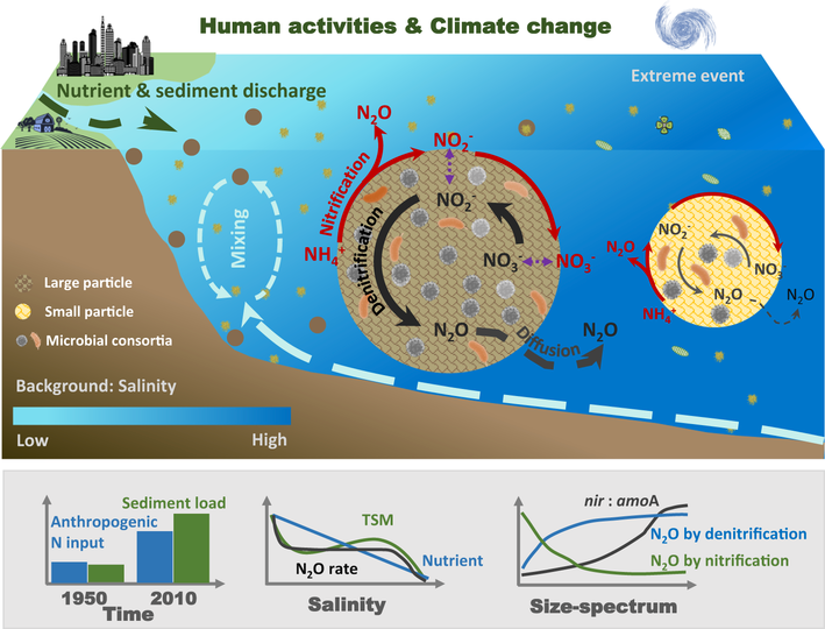The heavily human-perturbed coastal oceans are hotspots of nitrous oxide (N2O) emission to the atmosphere. The processes underpinning the N2O flux, however, remain poorly understood, leading to large uncertainties in assessing global N2O budgets. Using a suite of nitrogen isotope labeling experiments, we show that multiple processes contribute to N2O production throughout the estuarine-coastal gradient, sustaining intensive N2O flux to the atmosphere. Unexpectedly, denitrification, rather than ammonia oxidation as previously assumed, constitutes the major source of N2O in well-oxygenated coastal waters. Size-fractionated manipulation experiments with gene analysis further reveal niche partitioning of ammonia oxidizers and denitrifiers across the particle size spectrum; denitrification dominated on large particles and ammonia oxidizers on small particles. Total N2O production rate increases with substrate and particle concentrations, suggesting a crucial interplay between nutrients and particles in controlling N2O production. The controlling factors identified here may help understand climate feedback mechanisms between human activity and coastal oceans.

Wan, X., Sheng, H. X., Liu, L., Shen, H., Tang, W., Zou, W., Xu, M. N., Zheng, Z., Tan, E., Chen, M., Zhang, Y., Ward, B. B. & Kao, S. J. (2023). Particle-associated denitrification is the primary source of N2O in oxic coastal waters. Nature Communications. 14, 8280.